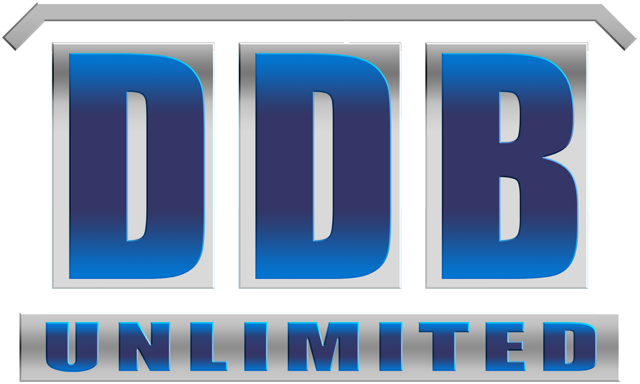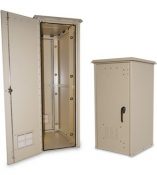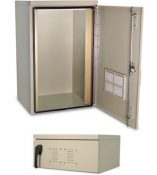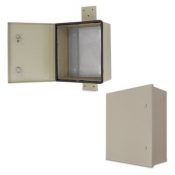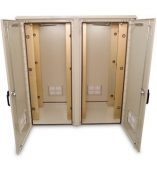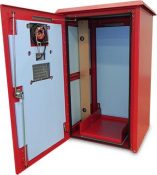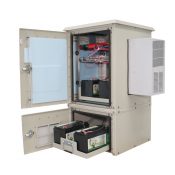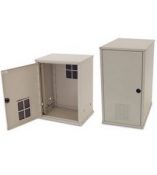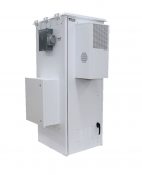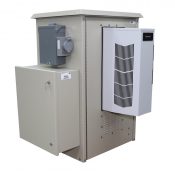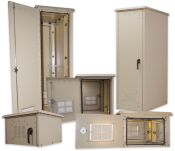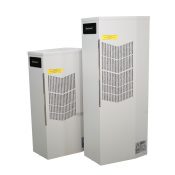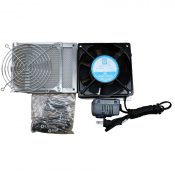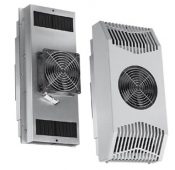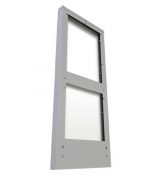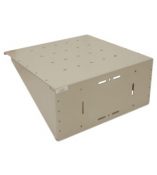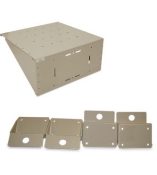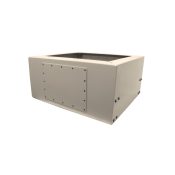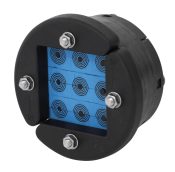Downloads and White Papers
Below you will find information on our indoor cabinets, as well as our outdoor traffic, pole/wall and telecom enclosures.
- Download Catalog
- Download Drawings
- Installation Instructions
- ISO 9001:2015 Certificate (PDF)
- DDB Unlimited Certificate of RoHS Compliance (PDF)
- Download DDB Unlimited Conflict Mineral Policy (PDF)
- DDB Unlimited Certificate of UL Compliance - US (PDF)
- DDB Unlimited Certificate of UL Compliance - Canada (PDF)
- Cal Prop 65 Supplier Declaration (PDF)
- ETL Type 4 Letter Report
- nVent Part Numbers and Warranty Information for DDB Unlimited
- Overview of the BEAD Program
- Comprehensive Guide to Safe Schools Security Solutions
- Comprehensive Guide to Mobile Surveillance Solutions
- Smart Parking Solutions: Enhancing Urban Mobility
- Additional White Papers on DDBUnlimited.org
White Papers
Securing the Climate: HVACR Systems and the Role of Enclosures
HVACR stands for Heating, Ventilation, Air Conditioning, and Refrigeration. These four functions comprise the backbone of climate control in nearly all built environments, from residential homes to data centers, hospitals, and industrial facilities. While these systems are commonly grouped under one name, each component operates based on unique principles yet works in concert to maintain indoor air quality, comfort, safety, and efficiency.
Powering the Future: The Role of Wind Turbines in a Renewable World
Wind turbines convert kinetic energy from the wind into electrical energy. As wind passes over the blades, their curved shape causes them to lift and rotate, much like an airplane wing. This mechanical rotation turns a shaft connected to a gearbox, which increases rotational speed. The high-speed shaft drives a generator that converts the mechanical energy into electricity. That electricity then travels through power electronics and transformers located in nearby enclosures—either at the base of the turbine tower or in separate utility cabinets—before being transmitted to the electrical grid.
Powering Connectivity: Telecom Enclosures Built for Performance
In today’s hyper-connected world, telecom infrastructure forms the digital backbone of commerce, communication, and content delivery. Whether supporting 5G rollouts, microwave backhaul, or rural broadband, telecom enclosures serve as the protective core for vital electronics. DDB Unlimited’s outdoor telecom cabinets are engineered to meet and exceed the environmental and technical demands of this mission-critical space.
Securing Rail Systems: Enclosures for Modern Railroad Infrastructure
Modern railroad systems are complex, interconnected networks that go far beyond just locomotives and rails. They involve a vast array of communication, control, safety, and power systems, all of which must operate continuously across harsh outdoor environments. These systems enable safe, efficient rail transportation for both freight and passengers across thousands of miles of infrastructure.
Understanding FWA, CDN, and Satellite Internet
DDB Unlimited has consistently engaged with telecommunications technologies shaping the modern world. With rapid advancements in broadband and global connectivity, three technologies have emerged as pillars of the internet market: Fixed Wireless Access (FWA), Cellular Data Networks (CDN), and Satellite Internet. This paper explores their distinctions and advantages to help businesses and consumers make more informed decisions about their connectivity solutions.
Cable Entry Solutions
Our team at ddb has constructed this article to help further the costumer’s, and our own staff’s, understanding of cable entry systems. In this article we’ll attempt to answer a few common questions and provide in-depth information regarding cable entry systems.
5G Informational
The purpose of this article is to provide information on the most common and current signal technology, also known as 5G service. This compiling is in no way an endorsement of product or services.
5G Technology Overview
In telecommunications, 5G is the fifth-generation technology standard for broadband cellular networks, which cellular phone companies began deploying worldwide in 2019, and is the planned successor to the 4G networks which provide connectivity to most current cell phones. 5G networks are predicted to have more than 1.7 billion subscribers worldwide by 2025, according to the GSM Association. Like its predecessors, 5G networks are cellular networks, in which the service area is divided into small geographical areas called cells. All 5G wireless devices in a cell are connected to the Internet and telephone network by radio waves through a local antenna in the cell.
Cabinet vs Shelter
Normally when you think of a shelter there are a number of open frame, 19 inch telco style racks. Normally a shelter is chosen because of a lot of equipment to support the application. Shelters are expensive which can be built on site or as a prefab. The prefab is normally delivered on a flatbed trailer. For a remote site this can be a problem if the access road will not support a tractor/trailer. If there are 3 or less racks it would make sense to use a cabinet instead of a shelter. In any event the first item is to provide a concrete pad on the site. The concrete pad is required for a shelter or a cabinet. The pad normally requires a day to cure before the cabinet is placed on the pad.
Cable Entry Systems From DDB Unlimited
The cable entry system is designed for inserting cables and electrical conduits through divider walls, junction boxes, control cabinets easily. Install cables and wire quickly while saving space. At DDB we can help you with your cable entries, there are a variety of cable entry systems on the market. At DDB we will add your cutouts needed for your cable entry and add a cable entry system that meet or exceed all NEMA requirements. Most cable entry systems are rated at NEMA 4 and IP66.
Intelligent Roadways
What are intelligent roadways, and how do they impact our lives? As we look to the future, the implementation of Intelligent Transport Systems (ITS) will become more and more prevalent. Traffic cameras, Google Maps, weather data, and individual cars on the road are just a few of the many inputs that go into creating ITS. Through these inputs, ITS can display relevant information to drivers in real time to best facilitate the flow of traffic, help develop improved mapping systems, and provide data points for Department of Transportation goals.
DDB Filter Ratings
Filters use MERV ratings to indicate the performance level of the filter. MERV is short for Minimum Efficiency Reporting Value.
The MERV rating system was designed with ratings ranging from 1 to 16. As the rating number increases, so does the filters ability to trap smaller and smaller airborne contaminants; a filter with a MERV rating of 13 will be able to trap more particulates than a filter with a MERV rating of 4.
How Does The Alumishield Work?
As it is with most of nature the arc of the sun is a sine wave which the elevation changes with the seasons of the year. The solar arc is basically a shallow elevation in the winter and a nearly vertical elevation in the summer. A solar day varies from 8 hours in the winter to 14 hours in the summer and as well all know the higher the sun the hotter it gets.
Insulation
No matter how much insulation is installed in the enclosure, the temperature of the inside of the enclosure will come close to the temperature outside the enclosure unless there is heat or cooling generated inside the enclosure. The insulation provides a delay of the ambient temperature getting into or out of the enclosure and does not prevent the temperature incursion. Generally the R factor is basically the number of hours of the delay where R3 would be 3 hours and R12 would be 12 hours. This delay is extremely critical to provide time for the cooling or heating of the inside of the enclosure so that the temperature extremes do not exist that can damage equipment.
Sealed Lead Acid Batteries Explained
This document is intended to provide the user with an overview of the operation of Sealed Lead Acid Batteries (SLAB) and does not get into the chemical considerations of the design and manufacture that are quite complex. The current day SLAB battery has evolved over the past 30 years into a product that is reliable and safe to use in stationary platforms that require long term battery backup applications.
Lithium Batteries - The Different Models With Pro's and Con's of Each
At DDB Unlimited we manufacture and design a complete line of battery enclosures for use in almost all areas of battery management from telecommunications, solar and green energy battery storage projects. Our sales and engineering staff are always being asked questions on Lithium battery technology and what is the best battery to use. This paper was written to inform you of the technology of Lithium batteries and the pros and cons of each type.
NEMA Rated Enclosures and Listed Type Rated Enclosures Are Not The Same
There are fundamental differences between an enclosure that is “NEMA Rated” by a company solely; without third-party evaluation and one that is “Listed” to a Type Rating by a National Regulatory Testing Lab for a company.
Redundancy
Redundancy is one of those terms that the military or space systems employ so that the mission is completed successfully. Actually we encounter redundancy in nearly everything that we do. For example the mechanical break on your car is there in case the hydraulic break systems fails. The door micro switch on your microwave is there in case you open the door before the timer is finished. Generally there is a backup for nearly everything that we do because things do fail. Most of our more intelligent systems have an independent system that quarries each system and votes which system is operating properly and gives control to that system. This is normally only found on fully automated systems where human input is not available. Many of our customers at DDB have fully automated remote fielded systems that have to operate on their own without human intervention. They can report a failure status to the Network Operations Center (NOC) which typically dispatches a technician to the site to fix the problem.
Removing The Potential For Condensation In An Electronic Cabinet
The age old problem of keeping condensation from forming has been exacerbated by current day micro electronics with devices and printed circuit lands that are so small that it takes a 100 power microscope to see them. The advantage to the system designer is that much more capability can be provided in a smaller space due to the reduction in equipment size and increased speed due to less transmission paths lengths between circuits and devices. Equipment that is designed for extreme environments typically has some type of conformal coating placed on the circuit cards to prevent condensation and containments from effecting the operation of the equipment. This is an expensive process since there are additional steps in the manufacturing process and additional design requirements since the transfer of heat from the circuit cards must be provided by heat sinks due to the fact that the devices are no longer cooled by convective air flow in contact with the devices.
Selecting The Right Rectifier And Batteries For Your Application
The initial selection of the rectifier and batteries for your application may seem simply selecting the rectifier based on the current requirement of your system and the battery backup time for operation without facility power. Typically most initial designs will grow by at least 20% after implementation so it makes sense to plan for the additional current requirement up front and save later grief or reduced capability later on. The current requirements of the rectifier has to support two current requirements (1) provide current to operate the equipment (2) provide charging of the backup batteries. The current will flow from the highest voltage source and by design this is the rectifier. In a 48 volt system the rectifier is normally set to between 54 and 56 volts. As long as facility power is being provided to the rectifier the equipment will receive its power from the rectifier. When facility power is lost the equipment will receive its power from the battery bank. The rectifier output to the batteries is diode isolated so that vertically no current will be drained by the rectifier when the rectifier is not being powered.
Solar Load & Enclosure Color
Choosing the right color for an outdoor enclosure in high ambient geographical locations is important to the life expectancy of internal equipment; internal equipment should be rated significantly higher than expected solar and internal heat loads.
Solar Load Locations Within The Continental United States
The solar loading of a cabinet is critical to the location as can be seen from the following map of the US. This map is based on the annual irradiation and takes into account the change in the seasons that normally occur. This only affects cabinets that are outside in direct view of the sun. Those cabinets that are shielded from the direct irradiation of the sun should not be considered in this evaluation.
Thermal Management Trends for Enclosures
While most customers want energy efficiency in air conditioners, they don't seem to want to pay the initial up cost in a DC air conditioner. Of course, battery backup and the perception that battery life longevity is determined by temperature has been a hindrance in increasing temperatures or switching to alternative solutions. With most new battery purchases being Lithium-Iron Phosphate, you will need to educate yourself in order to change to more energy efficient thermal solutions, this includes information on increasing the temperature in your enclosure to save energy and increase the life of the AC.
OD Enclosure Seismic & Overhead Lifting Analysis
With great anticipation DDB is proud to announce the complete line of OD Enclosures are now tested to Zone 4 Seismic Compliance. All 4 families (OD, WOD, 2OD & 3OD) have now been tested to meet and exceed the Telcordia GR 63 standard. Zone 4 Seismic asks for less than 3” of deformation of the enclosure and aging the OD family over performed with less than 1/2” deformation. When properly loaded and anchored the OD family exceeds the safety standards set forth by ASME B30.20, B30.9 and placed for seismic compliance. The “elastic stress analysis method” is also used to satisfy all the seismic design by analysis requirements set forth by Telcordia GR 63.
But we didn’t stop at the Zone 4 seismic testing. In addition to being extremely functional and feature rich the entire OD family (OD, WOD, 2OD & 3OD) has also been tested to overhead lifting standards with incredibly high scores in overhead lifting.
To our existing customers these achievements come as little surprise due to our rugged construction and continued dedication to American quality; all backed by an industry leading 15-year warranty.
Wind Load Analysis Study
Executive Summary On December 1, 2011, SolidBox published a report regarding a series of structural analyses that were conducted on the OD, 2OD, & 3OD (Outdoor) enclosures to verify their integrity in high-wind conditions, specifically winds up to 150MPH.
Since the publication of the original report, the ASCE has updated its Basic Wind Speeds charts to reflect increases in overall wind speed. The peak design wind speeds have increased from 150MPH to 181MPH, per ASCE 7-10. As a result, DDB contracted SolidBox to reanalyze its enclosures for these higher wind speeds. Initial findings of the analysis showed loads and stresses near the conservative, self-imposed, limits requested by DDB. SolidBox suggest slight modifications to the Alumishield brackets, rivets, and mounting hardware. DDB created an upgrade option to the Alumishield cover specifically for locations where the peak sustained wind speed can exceed 150MPH. This report details the steps taken to verify compliance of the upgraded Alumishield cover.
This analysis proves that the upgraded Alumishield covers for the OD, 2OD, & 3OD enclosures are safe for operation in winds up to 200MPH.
Things to Consider When Choosing an Enclosure for an OSP Application
Selecting the right enclosure for an outdoor application for the first time can be a daunting task and should be addressed with a systematic approach in order to minimize problems in the field. Once the enclosure has been placed in the field the number of options becomes limited and often expensive to correct. This document is intended to provide a check list up front for the initial design to eliminate as many issues prior to installation as possible.
Things to Consider When Choosing an Enclosure for an OSP Application (PDF)
Moisture and/or Condensation is a Major Concern
Moisture and/or condensation is a major concern to any outdoor enclosure. Typically condensation and the chemicals that adhere to the condensation are a major cause of system faults in electronics equipment.
The key to keeping moisture from forming in an outdoor cabinet is to insure that the cabinet inside temperate is above the dew point. As the humidity outside of the cabinet is at or above RH 80 % and ambient temperature are above 80 degrees F the separation between the dew point and the cabinet inside temperature become very close about 5 to 7 degrees F.
Remember that NEMA-4 is dust tight but not air sealed and moisture is a gas contained within the air and will eventually penetrate the cabinet.
With direct air cooled cabinets the recommended temperature range is 90 to 104 degrees F to prevent condensation from forming. Air conditioned cabinets are a different story since the evaporator coil in the air conditioner will remove the moisture in the cabinet due to the temperature of the evaporator coil being below the dew point. This condensation is then routed outside of the cabinet via a drain tube.
